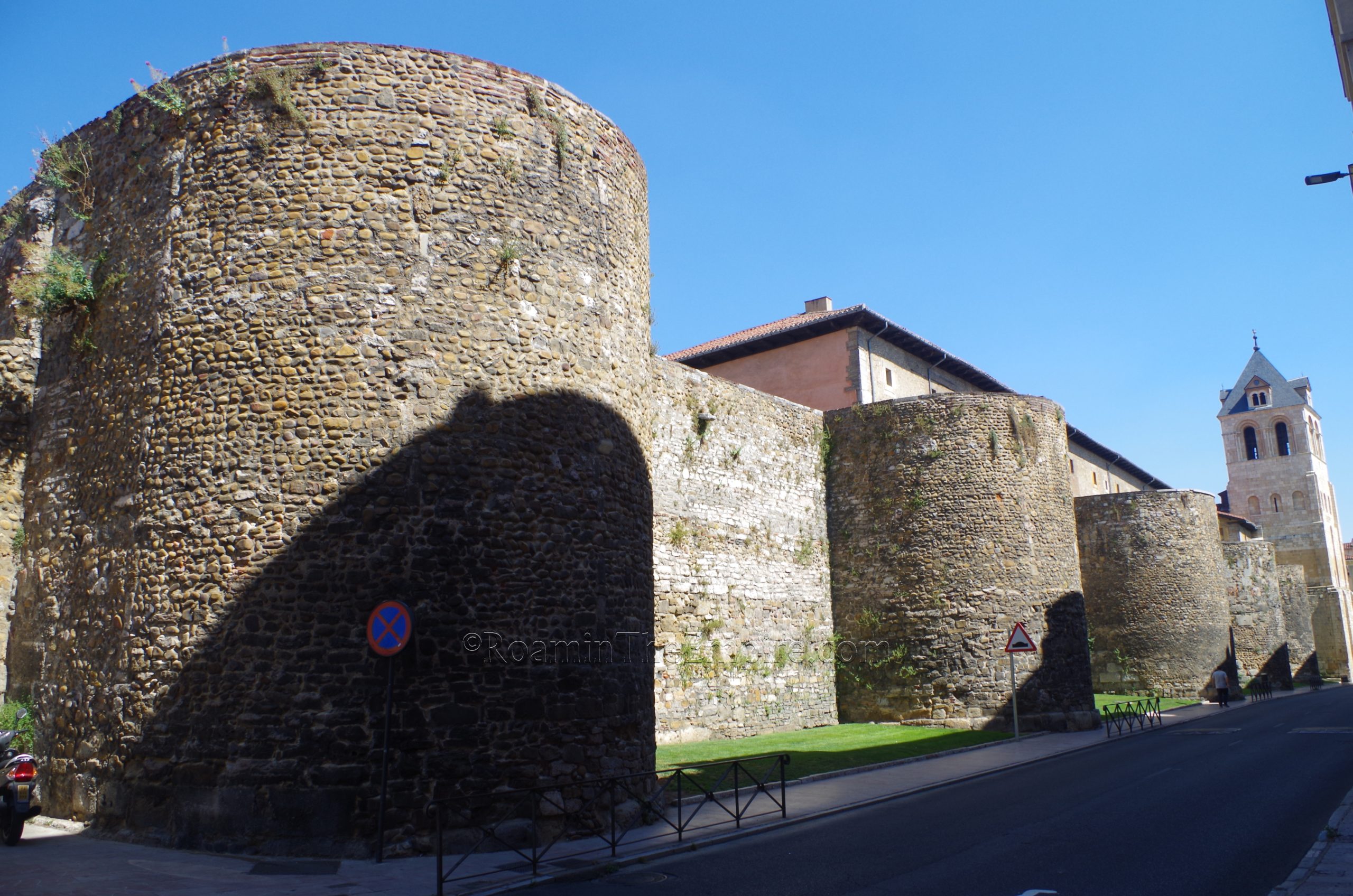
Continued From Casta Legionis, Hispania Tarraconensis Part I
Heading back out to the street in front of the walls, Calle Ruiz de Salazar runs for about 150 meters north before ending in Plaza San Isidoro outlet. Just beyond that is an excavated area of one of the towers of the 3rd-4th century walls of Castra Legionis. Set back just a little bit farther east from the tower are some scant remains of the 1st century CE fortification walls, recognizable from the more regular, rectangular cut stone blocks as opposed to the rounded rock that makes up much of the later walls. It’s worth noting that there is the footprint of a Roman sandal at intervals set into the pavement along the route of the walls and some of the other Roman remains as a sort of guide.
Just past the more modern tower, the Torre de Gallo, on the north side of this excavated area is another stretch of walls; roughly 120 meters of unbroken wall with a series of the five rounded towers. About 25 meters beyond the end of these walls is the point at which the walls would have then turned toward the east, of which a significant length and number of towers are preserved. Unfortunately, much of this part of the walls are inaccessible. A small section can be seen off of the adjacent Calle Era del Moro. It looks as though at the time of my visit, they may have been working on making this area accessible as some sort of park. This part of the walls leads to the Arco de la Cárcel, which is not an ancient construction, but is at the spot where the Roman gate would have been and is apparently modeled on what it was believe to look like. This is also the gate near which the aqueduct was found.
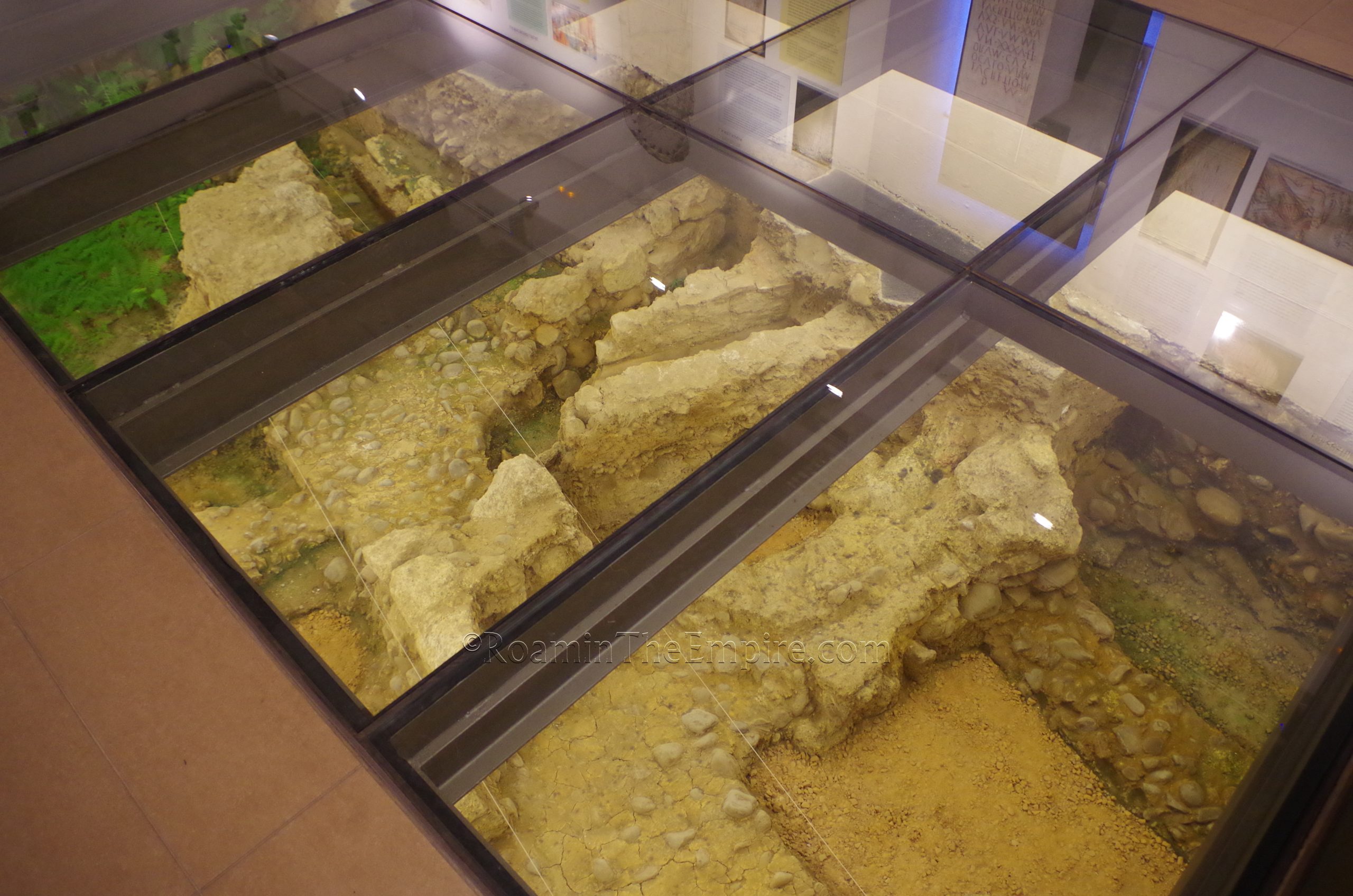
Through the Arco de la Cárcel is the Centro de Interpretación del León Romano. This small interpretive center is open Monday through Friday from 10:00 to 21:00, Saturdays from 10:00 to 14:00 and 17:00 to 20:00, and on Sundays from 10:00 to 14:00. Admission is free. As the name indicates, it is not really a museum but an interpretive center. There are a few ancient objects, but most things are reconstructions and replicas and a lot of information, but only in Spanish. A few things are particularly interesting, though. The building abuts the interior of the fortification wall, so there is a section of the wall that is visible inside, including a portion of the core of the 1st century CE walls. Access to a walking path atop the walls is also available from the interpretation center.
In a room in the back of the interpretive center is perhaps the most interesting setup. A glass floor in the middle of the large room reveals excavations done beneath the building the center is housed in. In this excavated area are remains from the three phases of Roman military occupation at Castra Legionis. It’s hard to make out exactly what is what, but there is a sign with a diagram of the phases, though all the info is in Spanish. From the Augustan-era temporary camp is a possible oven as well as part of the earthen wall. From the early 1st century Legio VI occupation, a building of unknown use, and from the later 1st century Legio VII fort, the foundations of a warehouse. Some remains in the courtyard outside the center are of a later period of occupation and not directly accessible.
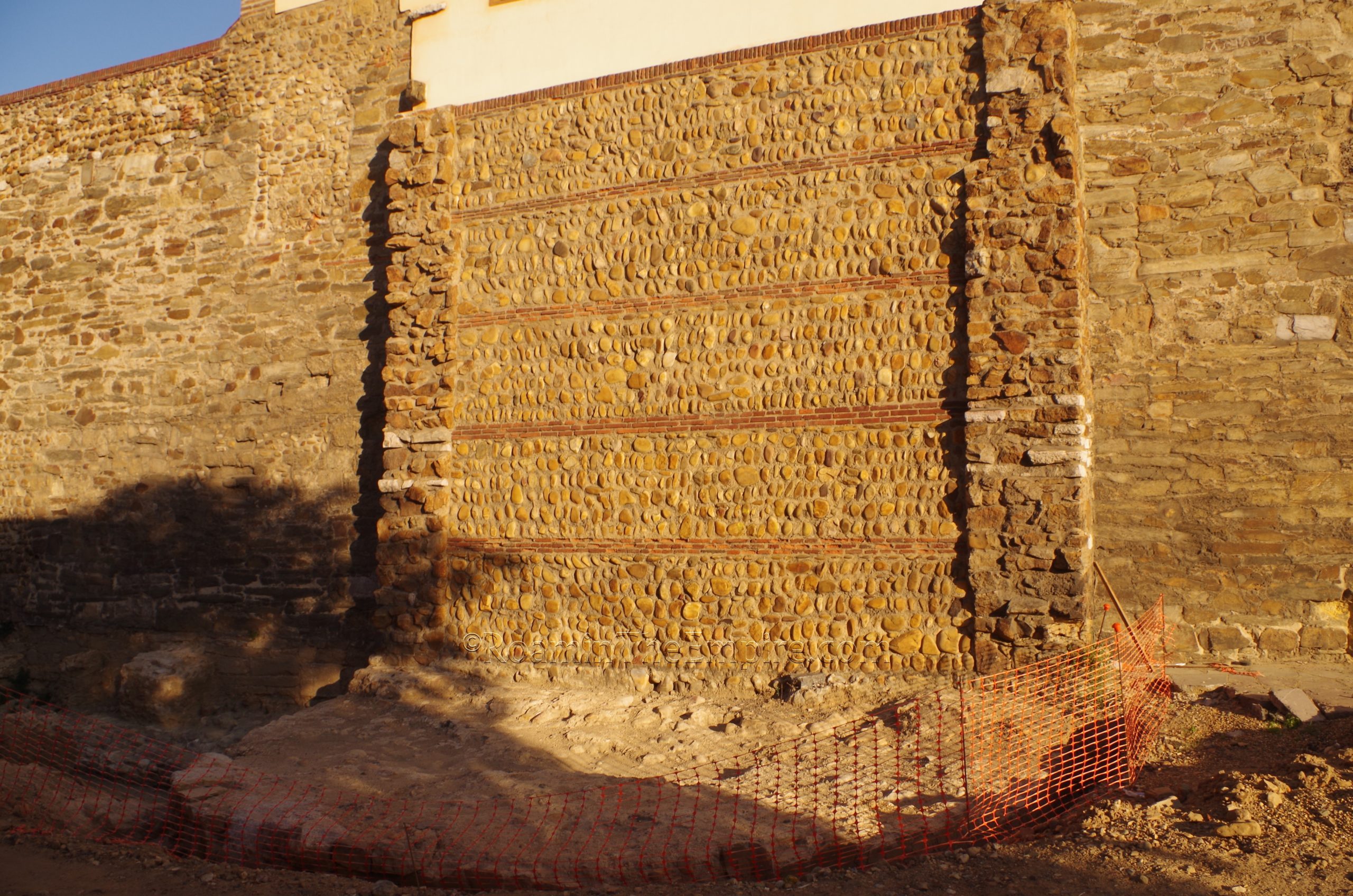
Heading back out the gate and continuing east along Calle Carreras is another stretch of wall, though all the towers had been demolished. When I visited, Calle Carreras was actually dug up and the foundations of the towers were visible in excavations along the walls, as well as the deeper foundations of the walls, which presumably date to the early 1st century CE circuit of Castra Legionis’ walls. Like the stretch on the west side of the Arco de la Cárcel, this may be part of some project to restore the walls, but, it might also just be work on the street that has revealed the foundations and given the opportunity to study. I couldn’t find any information about long term plans for this area and whether or not these parts of the walls will be permanently visible or accessible. The walls then take a turn to the south along Avenida los Cubos, which was also being excavated and worked on, and continue, with a few small breaks, all the way down to the Catedral de León. At the cathedral, the course of the walls effectively disappears for quite a while.
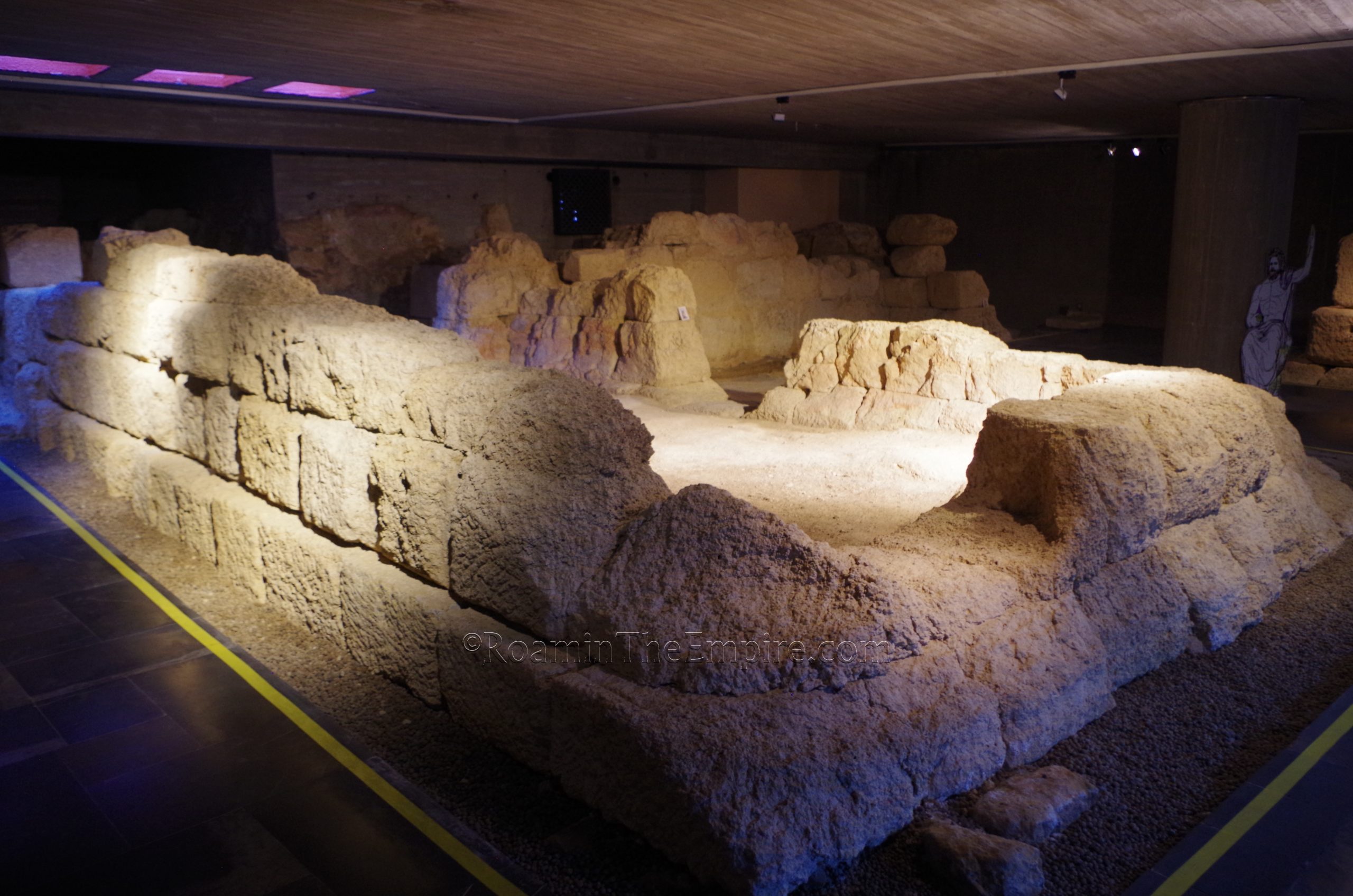
In the square (Plaza de Regla) on the south side of the cathedral, however, is the Cripta Arqueológica de Puerta Obispo. The archaeological area is open in the summer (April 1st to October 15) Wednesday through Sunday from 10:00 to 14:00 and 17:00 to 20:00 and closed on Monday and Tuesday. From March 1st to March 31st and October 16th to November 15th it is open Saturday from 10:00 to 14:00 and 17:00 to 20:00 and Sunday from 10:00 to 14:00, but closed the rest of the week. The remainder of the year it is closed with no opening. Admission is free.
On the east side of the underground archaeological area are the remains of Castra Legionis’ porta principalis sinistra, the eastern gate, of the Legio VII fortifications dating to the last quarter of the 1st century CE. The foundations of one of the towers as well as the entry gate. On the west side of excavations are the remains of a portion of a bathing complex dating to around the same time. The actual preserved portion is identified as being the latrines, with a large water channel being the most identifying feature. There is also part of the cloaca located between these two sets of remains on the north side. There are a few objects found in the excavations on display. A couple of signs explaining what’s here are present, but like most in the city, they are only in Spanish.
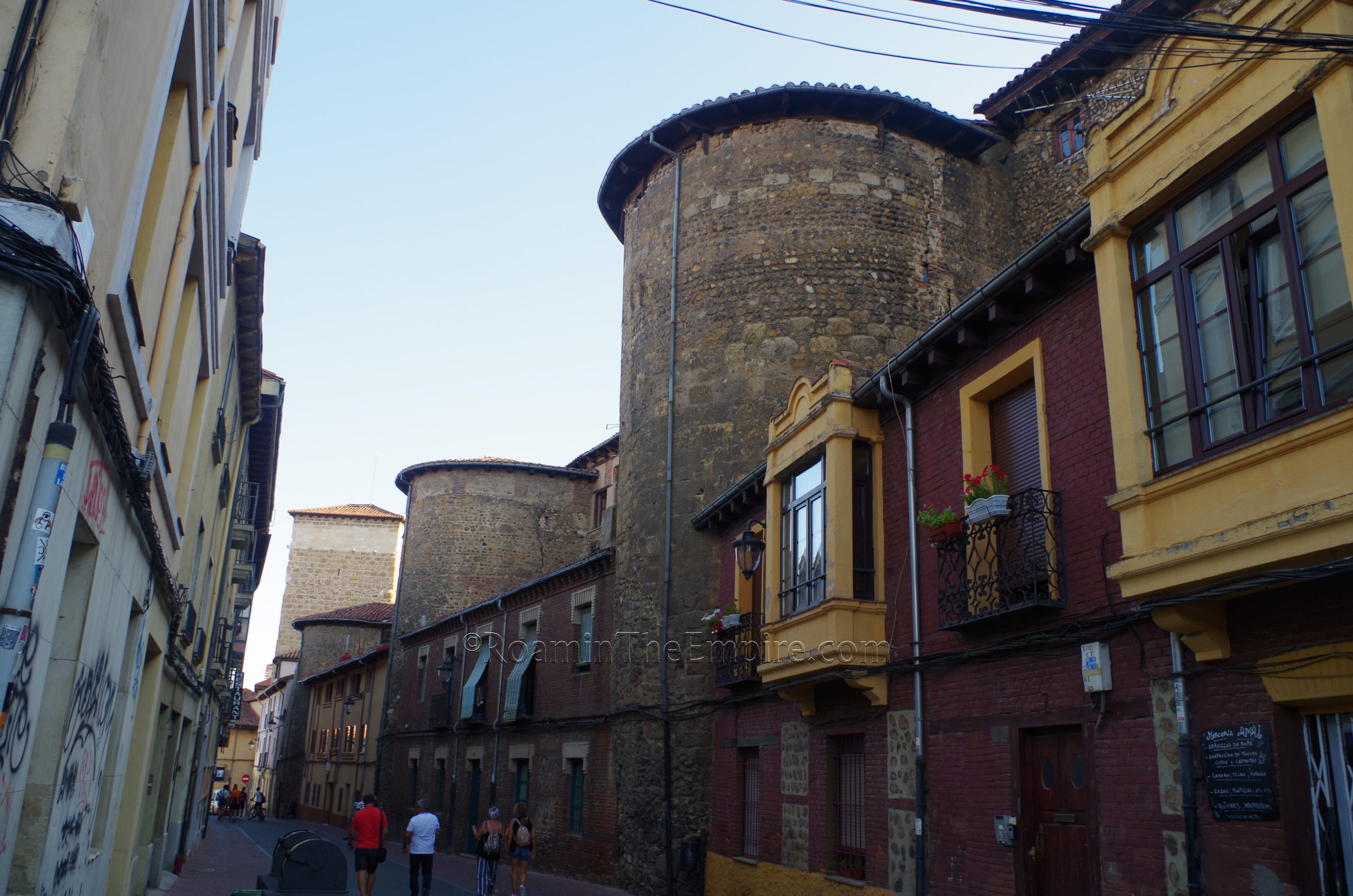
The walls of Castra Legionis continue a little farther to the south after the Plaza de Regla, with three towers being incorporated into the buildings along Calle Serradores. Shortly after the last tower here, the walls would have turned and continued back to the west making up the southern circuit of the walls. There aren’t really any identifiable remains of the walls on the south side, though there are markings in the pavement that delineate the course of the walls, such as the outline of a tower at the south side of Plaza Conde Luna, where Calle Conde Rebolledo exits out of the plaza.
About 110 meters to the east/northeast of the cathedral, among a parking lot at the intersection of Calle Arquitecto Ramón Cañas del Río and Calle el Torrejón is a rectangular green space surrounded by a low opus caementicium wall. This is identified as a cistern, or by some accounts, possibly a castellum aquae. There is really nothing else here other than the low wall that almost completely surrounds the roughly 35 x 13 meter area. It is in an open public area and always accessible.
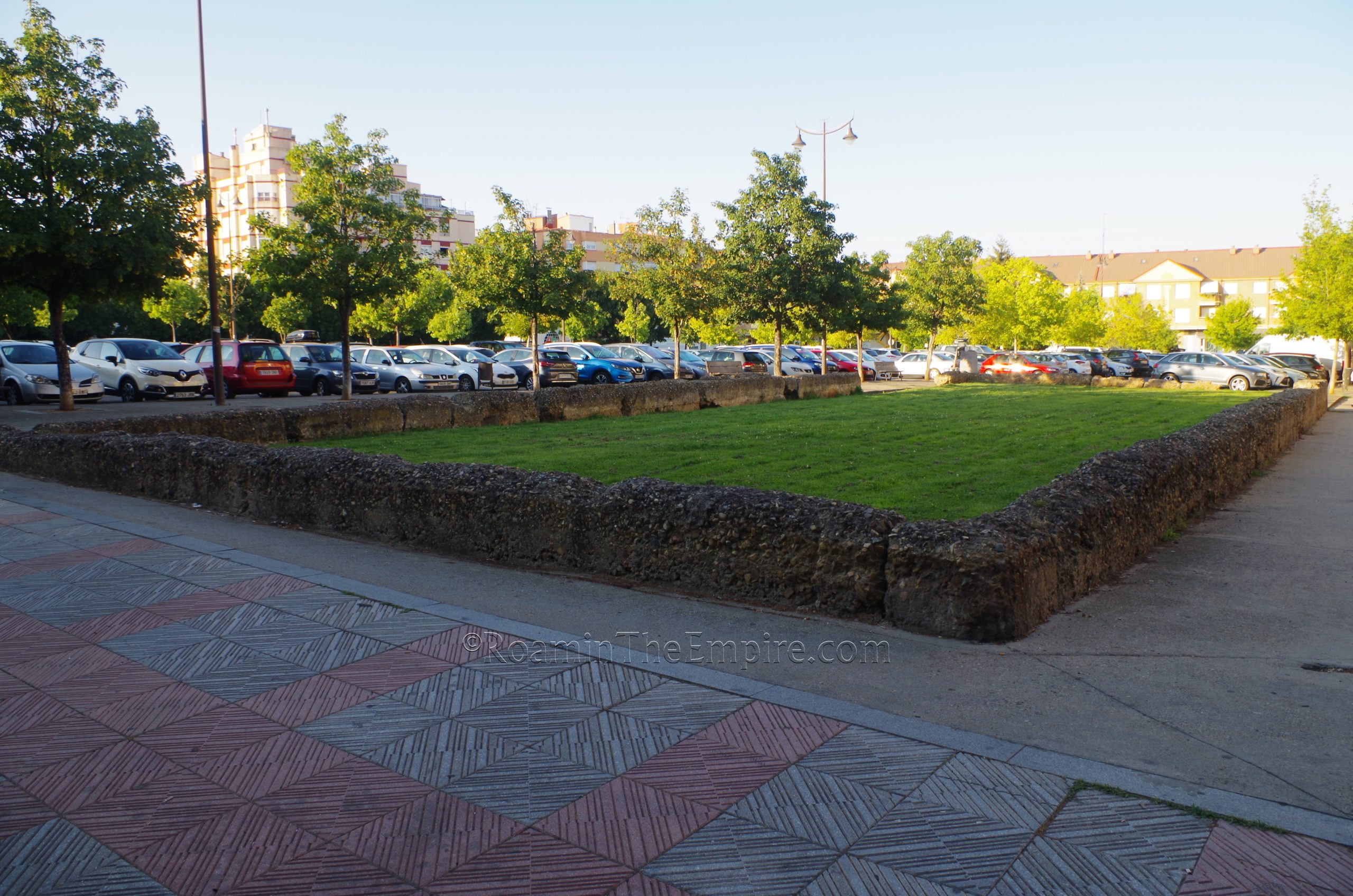
The last bit of the remains of Castra Legionis is located a little south of where this itinerary started, at Calle Cascaleria. Located here are the remains of what is identified as being an amphitheater, though the identification doesn’t seem to be completely certain. A small sign indicates the presence, but there are no opening hours or contact information. I inquired at the interpretive center about access and was told (from what I could understand) essentially that if a group of 5 or more gathered at the interpretive center at the right time and on the right day and wanted to see it and there was someone available to show it (there was not at that time), access could possibly be arranged as part of a general tour. The person working there seemed annoyed at the inquiry, so I kind of left it at that. I wouldn’t count on being able to get access to the amphitheater as it seemed like a convoluted system designed to discourage anyone who wasn’t a local from seeing it.
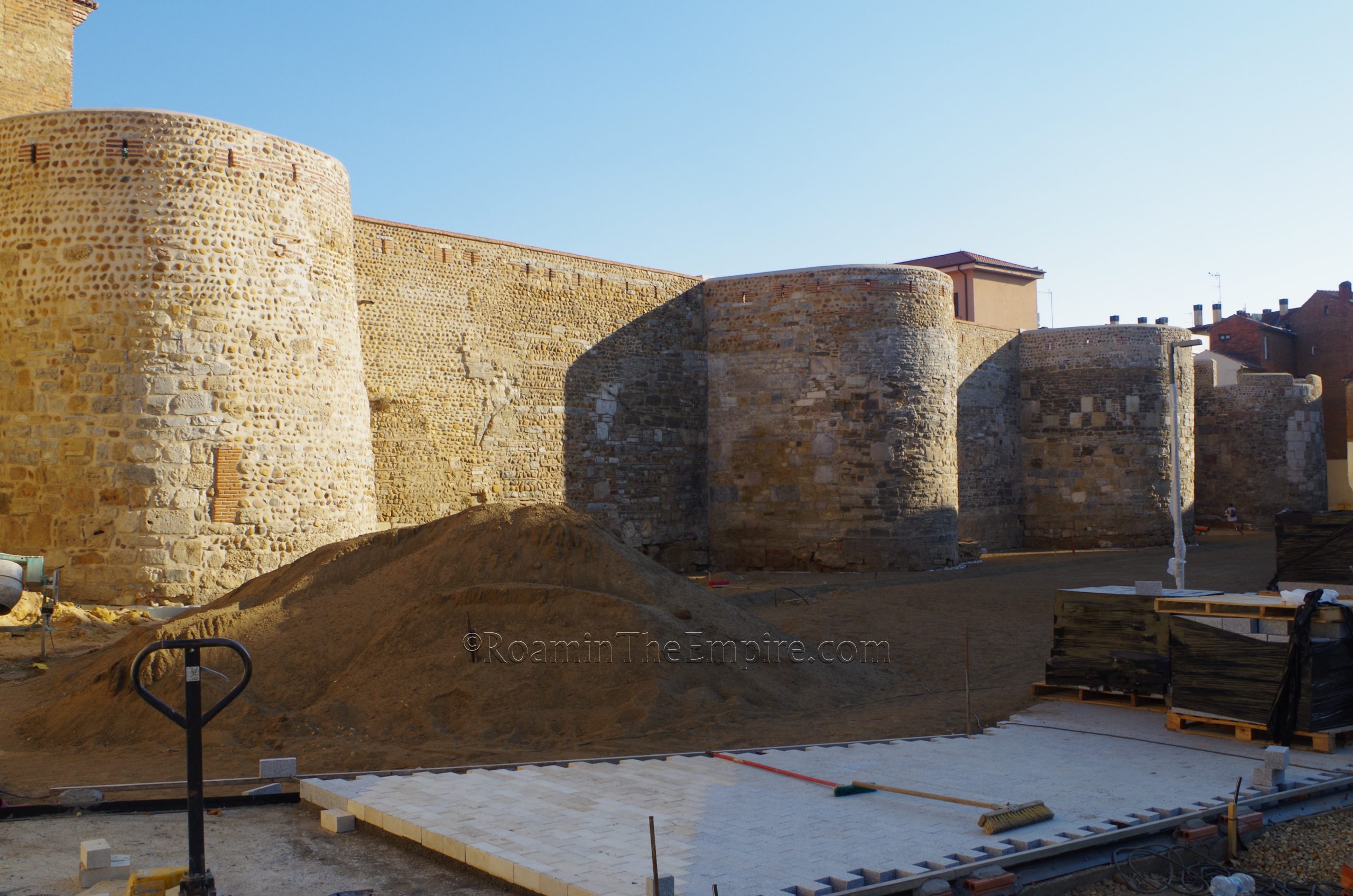
My trip to León was a little bit of an unplanned detour. I actually saw a copy of an object from the museum here in another museum and decided I wanted to see the original, but had already planned a few things for the day and decided to try and cram this in in the afternoon. Which given how nice the museum was, it would have been a pity to have missed out on it, so even with the rush it was extremely worthwhile. That being said, my trip to León was not planned out very well and a bit hectic. Even so, it took me about four hours total to see the museum and remains of Castra Legionis. A more leisurely pace may require a little more time, but it’s definitely manageable in a half day.
Sources:
Grant, Michael. A Guide to the Ancient World: A Dictionary of Classical Place Names. New York: Barnes & Noble Books, 1997.
Morillo, Angel and Victorino García-Marcos. The Defensive System of the Legionary Fortress of VII Gemina at León (Spain): the Porta Principalis Sinistra. Proceedings of the XIXth International Congress of Roman Frontier Studies, Sep. 2003.
Morillo, Angel and Victorino García-Marcos. Legio VII Gemina and its Flavian Fortress at León. Journal of Roman Archaeology, Vol. 16, 2003.
Morillo, Angel and Victorino García-Marcos. The Legionary Fortress of VI Victrix at León (Spain). The New Evidence (1995-2000). Proceedings of the XVIIIth International Congress of Roman Frontier Studies held in Amman, Jordan, Vol. 2, Sep. 2000.
Morillo, Angel and Victorino García-Marcos. The Roman Camps at León (Spain): State of the Research and New Approaches. Gladius, Vol. 13, 2009.
Smith, William. Dictionary of Greek and Roman Geography. Walton & Murray, 1870.
Stillwell, Richard, William L. MacDonald, and Marian Holland. McAllister. The Princeton Encyclopedia of Classical Sites. Princeton, NJ: Princeton U Press, 1976.
Tacitus. Historiae, 2.11.


